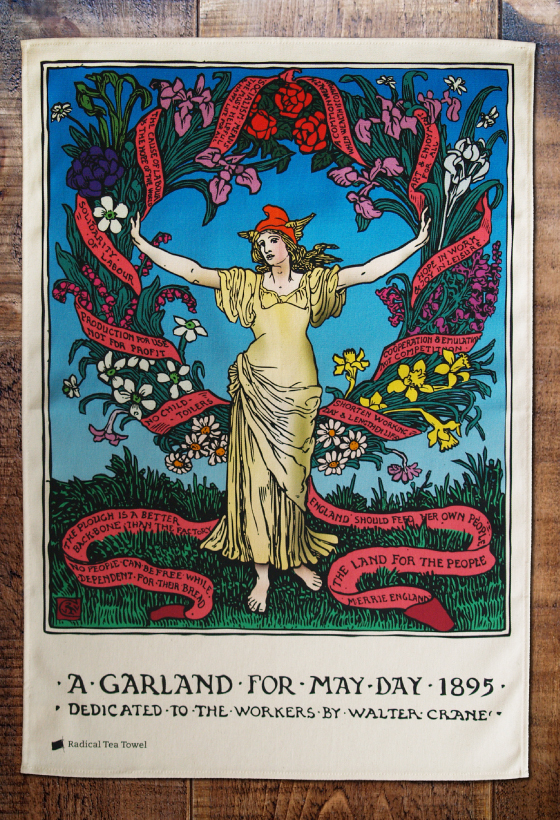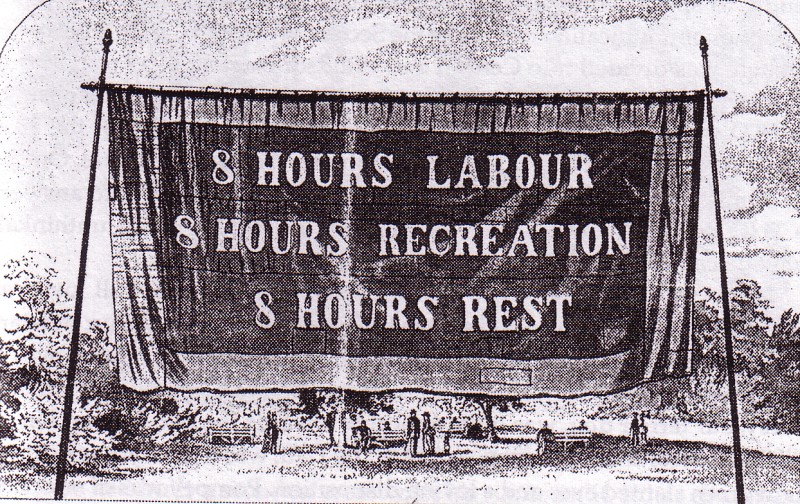The American Origins of May Day
Posted by Pete on Apr 30th 2019
In the 1880s, the US labor movement was doing battle for a shorter, eight-hour working day. Out of this struggle came May Day – the worldwide celebration of workers' rights and resistance to the greed of the 1%.
For well over a century, 1st May has been the day of the working class and organized action around the world.
Rosa Luxemburg called 'May Day' a commemoration of "the bitter struggles and the many sufferings" which have marked the long, ongoing struggle against economic exploitation of poor by rich.
Over the decades, there have been solemn May Days and boisterous May Days. Some May Days have passed without incident, others (like 1st May 1971 in Washington DC) have sparked major protest actions.
But every single May Day ever traces its origin to the late-19th century United States.

“We’re summoning our forces…”: The Eight-Hour Day Movement
The 19th century was the opposite of the 20th in that the US labor movement was far more radical than its European counterpart.
New revolutionary ideologies like anarchism and socialism were widespread through the American working class, Chicago was easily the most radical city in the world, and one Karl Marx was a very popular European correspondent writing for the New York Tribune.
In the 1880s, much of this revolutionary American energy was being channelled into the movement for an eight hour working day.
Long before Dolly Parton’s iconic ballad on the "9 ‘til 5" daily grind, things were even worse for American workers. Plenty were working 100-hour weeks for crazily low wages.
And so, following the lead of Australian workers, the American trade unions began agitating for a legally limited, eight-hour day.

Above: a banner used in Melbourne, Australia, in 1856
From the 1850s onward, strike actions began to win scattered victories. On 22nd February 1868, the California State Legislature passed an eight-hour day law under pressure from industrial action.
Things heated up even more in 1884, when the US-wide 'Federation of Organized Trades and Labor Unions' resolved that unless the eight-hour-day was enforced on a federal level by 1st May 1886, a general strike would be called to win it.
The months passed to the deadline without concessions from business. Meanwhile the 'May Day' movement grew to a quarter of a million workers.
Their battle hymn was JG Blanchard's Eight-Hour Song:
"We're summoning our forces from shipyard, shop, and mill; Eight hours for work, eight hours for rest, eight hours for what you will."
Martyrs in Chicago: The Haymarket Affair
1st May 1886 arrived and, as promised, tens of thousands of American workers walked out on strike to seize the eight-hour day their employers had refused to give them.
In Chicago, the fiery heart of the US Left, the authorities lashed out with a combination of police violence and government conspiracy – the Haymarket Affair saw strikers fired on by police and then five labor leaders executed on false charges.
Those spring days of courage and sacrifice inspired most of the next generation of US working class leaders. Emma Goldman remembered May 1886 as "the events that inspired my spiritual birth and growth".
Modern May Day
But another legacy of the US Eight-Hour Day Movement, of course, was the creation of 'May Day' as a radical workers' celebration all around the world.
When, in 1889, the International Workers' Congress (being held in Europe) resolved to adopt the demand for an eight-hour day and to pursue it with an annual work stoppage, the American delegates present successfully suggested 1st May, and it's stuck ever since.
And so, billions of workers around the world, past and present, can trace their day – 1st May – back to the bravery and invention of the late 19th-century US labor movement.
Now that the United States is once again one of the most dynamic scenes for radical labor politics, it's pretty exciting to imagine what gifts and inspiration it will give to the workers of the world this time round.
